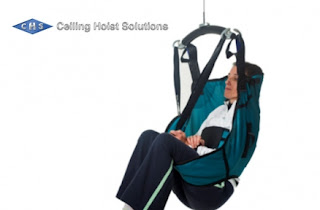One of the most crucial elements of comfortable
patient lifting is ensuring you have the right sling.
Recently, CHS Healthcare published a white paper on choosing the right sling.
We offered our clients excellent advice on safety as well as
affordability.
In ensuring that a sling is appropriate for your
needs - or for the needs of a person in care, there are three factors to weigh
up:
• The weight of the patient -
slings come in a variety of sizes to support patients - whether they be young
children or bariatric patients. One size
sling does not always fit all.
• The status of the patient - does your patient have head and trunk
stability? Muscle tone? Do you you need to work around an amputation? A range of slings exist to support patients
with different levels of mobility.
• The needs for lifting - what position is the patient in, and what
position are you moving them to?Sitting to sitting? Recumbent to recumbent or
sitting to recumbent? This means looking
at where you are moving them from, to where you are moving them to.
CHS Healthcare stocks a wide range of slings to
meet the diverse needs of people requiring different kinds of mobility
aid. Here are just a few of the options
available to you:
Our most basic sling is the general purpose
sling, which is available in six sizes.
This is effective in most settings and under many circumstances when
patients have some upper body control.
It has additional leg padding for comfort and is easy to fit.
For individuals who need extra comfort, we also
stock a customisable Comfort Sling range in sizes small - extra-large. These
can be individually fitted and modified for the individual user. Etac Molift, famous for the portable Nomad
hoist, have also designed a sling range built for comfort known as the Optimum
Sling Range.
The Waverley Glen Deluxe sling range is known
for it’s durability and
fit. The material is hard-wearing nylon
and polyester, which dries easily if used in wet areas due to the lack of metal
parts. They also provide a good basic multipurpose
sling, an excellent choice for facilities that require flexible use of their
slings.
For physiotherapists we stock a range of walking
slings to assist with the rehabilitation of patients with some weight-bearing
ability. We also have slings appropriate for patients requiring additional head
support, with sensitive skin conditions, younger patients, patients with lower
limb amputations and slings specifically designed around toileting and bathing.
We also stock disposable slings for the greatest control over hygiene and
infection.
For more information, take a look at our full
range of slings on our website. In addition, always make sure that all staff
or carers are effectively trained to use the sling you have chosen.

No comments:
Post a Comment